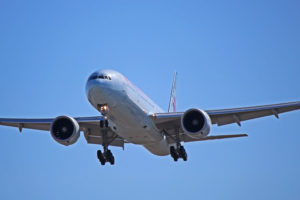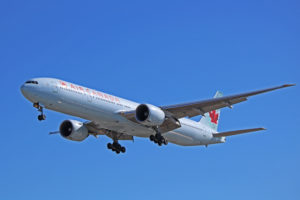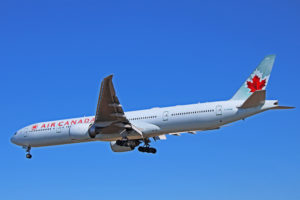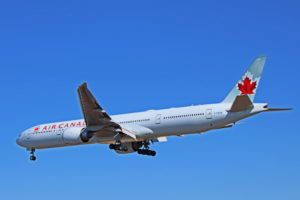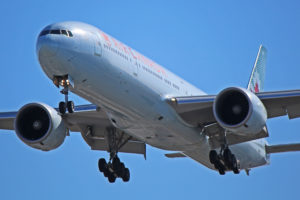 C-FRAM has a few incidents on record. However, for the Air Canada Boeing 777-300ER, only one was mechanically related. As with any long haul aircraft, things happen over the oceans of the world. This B77W has had a heart attack victim, passengers injured due to severe turbulence and incapacitated crew members. More details below.
C-FRAM has a few incidents on record. However, for the Air Canada Boeing 777-300ER, only one was mechanically related. As with any long haul aircraft, things happen over the oceans of the world. This B77W has had a heart attack victim, passengers injured due to severe turbulence and incapacitated crew members. More details below.
We photographed C-FRAM on April 20, 2018 while plane spotting at Toronto Pearson International Airport (YYZ). For full-size, high resolution versions for any of the photos in the image gallery, simply click on the individual pictures. See below for more detailed information on C-FRAM, the Boeing 777-300ER model in general and the airline.
Image Gallery
C-FRAM
Boeing 777-300ER
Air Canada
Resources
C-FRAM Air Canada Boeing 777-300ER Image Gallery
Want to use one of these photos for your website, blog or news site? They’re free to use – take a look at our Photo Usage Policy.
C-FRAM
C-FRAM performed its maiden flight on June 16, 2008 and was delivered to Air Canada on June 25, 2008. The Boeing 777-333ER is configured for a maximum total of 400 passengers with 40 seats in Signature Class, 24 more in premium economy and 336 economy class seats. This is one of 19 B77W aircraft currently in the main fleet of the Canadian airline.
Still in its first year of service, the aircraft was flying from Vancouver, British Columbia to Tokyo, Japan. Some four and a half hours into the flight, one of the engines had to be shutdown after the gearbox for that engine failed. C-FRAM was diverted to Anchorage, Alaska for a safe landing.
On August 26, 2012, the Boeing 777-300ER was flying from Paris, France to Montreal, Quebec. At 400 miles northwest of Shannon, Ireland, a 55 year old female passenger was experiencing symptoms of a heart attack. The airliner was diverted to Shannon for a safe landing where the passenger was taken to hospital.
Now, cue the ‘always wear your seat belt’ lecture. On December 30, 2015, the 777 was flying from Shanghai, China to Toronto, Ontario. While flying over the southern coastal mountains of Alaska, the airplane experienced severe turbulence. Despite an announcement explaining the oncoming area of turbulence and a warning to put on seat belts, many passengers felt they were more knowledgeable than the flight crew and remained unbelted. 21 passengers were injured from the rough ride and the airplane had to divert to Calgary, Alberta.
Most recently, C-FRAM was flying from Shanghai to Toronto and was on the climb, about 140 miles northeast of Beijing, China. Two flight attendants fell ill and were unable to continue duties. Six others also felt unwell but were able to stay on the job. The flight continued to Toronto.
Boeing 777-300ER
The first Boeing 777-300ER was delivered to launch customer Air France in 2004, nearly a decade after the initial 777 variant was introduced with United Airlines in 1995. The aircraft is 74 metres or 242 feet in length with a wingspan of 65 metres or 213 feet. At the tail, the B77W is 19 metres or 61 feet in height. The flight range is 13,650 kilometres.
Air Canada
Air Canada was founded in 1937, originally named Trans Canada Air Lines. The official name change came in 1965. The Canadian airline is headquartered at the Air Canada Centre on the grounds of Montreal Pierre Elliott Trudeau International Airport (YUL) in Dorval, Quebec. The main fleet consists of around 175 aircraft flying to over 200 destinations worldwide. With subsidiaries included, the numbers increase to over 400 airliners flying to 350 destinations.
Resources
